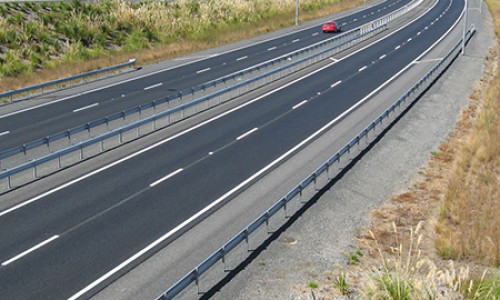Plans to upgrade one of New Zealand’s most dangerous intersections could be the South Waikato’s economic making.
In early 2020 the Government announced a $58-million project to install a roundabout at the Piarere State Highway 1/29 intersection north of Tīrau after years of serious crashes.
Whilst the project won’t kick off until 2022, Waikato River Trails general manager Glyn Wooller is getting in early to ensure it’s future proofed for walkers and cyclists. And he has big aspirations.
That includes extending the river trail, which has arguably become the district’s top recreational drawcard, from the Pokaiwhenua carpark off Horahora Rd to the new roundabout. In an area usually reserved for fast food and petrol outlets he hopes to establish a cycling hub as the gateway to the district.
Addressing the South Waikato District Council during its January meeting, Wooller said he was in early talks with Waka Kotahi New Zealand Transport Agency (NZTA) and [engineering consulting firm] WSP about his ideas.
“I believe there is an amazing opportunity to extend the trails…to the intersection which is an extremely high profile site,” he said.
“It will be just less than 4km and the idea is to create a gateway to the river trails and a gateway to the South Waikato because the more people we can attract the more economic development and profile we get.”
Wooller said setting up a hub near the roundabout would allow the district to take advantage of the 15,000 people passing each day.
“The roundabout positioning hasn’t been established yet but it is likely to be a bit further towards Matamata from where the current intersection is,” he said.
“What that will mean is there will be some vacant real estate where the current road is and I understand no provisions have been made for a service area, such as a McDonald’s or BP.
“It would be great if somehow that land could become available to us for a hub where we can promote the Waikato River Trails and other trails.
“It is certainly not guaranteed but it’s my vision.”
Councillor Hamish Daine supported the concept.
“It would be an amazing opportunity to have electric vehicle (EV) charging stations, e-bikes, you name it,” he said.
Mayor Jenny Shattock agreed.
“We [would be] hooking up to Matamata-Piako and Waipa, those are the big rides, and that is really really exciting,” she said.
“I have always been supportive of the Waikato River Trails. The impact and economic benefits that we as a district have received over the years have been significant.”
Wooller said the project would need to be partly funded by NZTA, the council, a recent grant from the Ministry of Business, Innovation and Employment, and various other partners.
“If we have a development and extension plan in place for the river trials it is more likely that NZTA will make that investment, so we are working actively in that space,” he said.
SOURCE STUFF: https://www.stuff.co.nz/waikato-times/news/300212148/waikato-intersection-upgrade-spurs-economic-hopes-for-popular-trails






























































